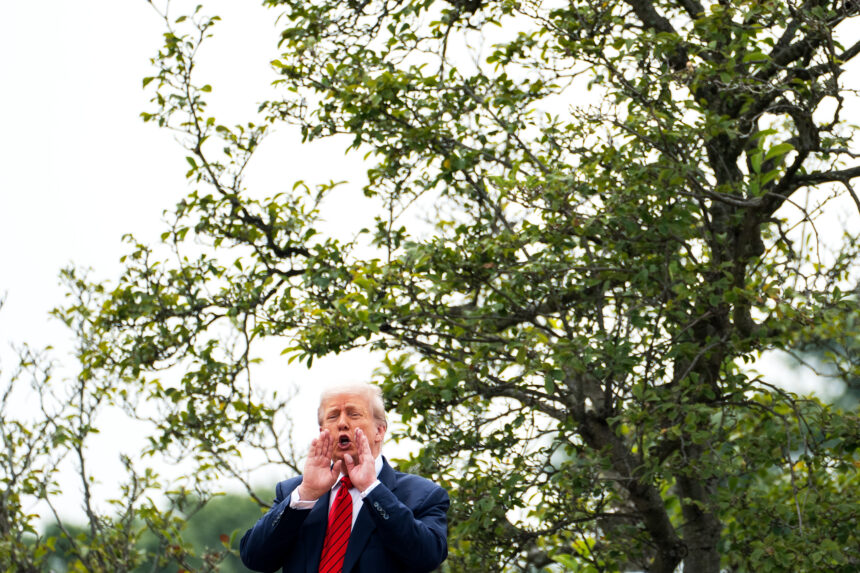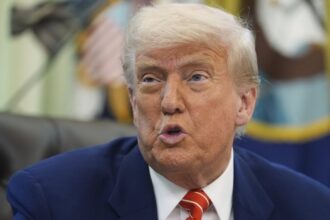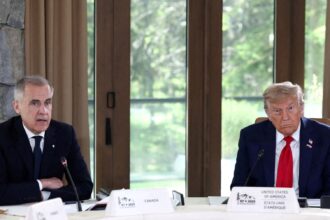As Donald Trump positions himself for another potential term in the White House, his bold pronouncements on trade policy have sent ripples through global markets and diplomatic corridors alike. The former president’s promise to implement sweeping tariffs of up to 20% on imports from all trading partners and potentially 60% on Chinese goods represents one of the most significant proposed overhauls of American trade policy in generations.
“We’re being taken advantage of by virtually every country in the world,” Trump declared at a recent economic forum, doubling down on his long-held belief that current trade arrangements systematically disadvantage American workers and manufacturers.
Economic analysts at Goldman Sachs estimate that Trump’s proposed universal tariff could increase consumer prices by 1.2% while potentially reducing U.S. economic output by 0.5% in the short term. The ripple effects would extend far beyond American shores, potentially triggering a fundamental restructuring of global trade patterns.
For Canadian businesses, which send approximately 75% of their exports to the United States, the stakes could not be higher. Despite the USMCA trade agreement negotiated during Trump’s first term, new tariffs would dramatically alter the calculus for cross-border commerce.
“The integrated supply chains between Canada and the U.S. have developed over decades,” explains Dr. Margaret Chen, professor of international economics at the University of Toronto. “Dismantling them would create significant economic dislocations for both countries, particularly in automotive manufacturing, agriculture, and energy sectors.”
The implications for global business extend beyond immediate price increases. Companies with international supply chains are already exploring contingency plans, including reshoring operations to the United States or diversifying their manufacturing bases to mitigate risk.
Former U.S. Treasury Secretary Lawrence Summers recently cautioned that broad-based tariffs would “represent a fundamental break with the economic consensus that has governed international trade for decades,” potentially triggering retaliatory measures from affected nations.
Indeed, European officials have privately indicated they would respond with counter-tariffs on American exports, particularly targeting politically sensitive products from swing states. Meanwhile, Chinese leadership has maintained a more measured public stance while accelerating efforts to reduce dependency on American markets.
Proponents of Trump’s approach argue that short-term disruptions would be outweighed by long-term benefits to American manufacturing. “The goal isn’t protectionism for its own sake, but creating leverage to negotiate more favorable terms,” said Robert Lighthizer, who served as Trump’s U.S. Trade Representative.
However, data from Trump’s first term suggests complex outcomes from tariff policies. While some manufacturing sectors saw modest employment gains, others faced higher input costs that offset benefits. Consumer prices for tariffed goods increased by approximately 10-30%, according to research from the Federal Reserve, with American purchasers bearing most of the cost rather than foreign exporters.
The political implications remain equally consequential. Trade policy has transformed from an arcane specialty into a central campaign issue that resonates strongly with voters across the political spectrum. Polling indicates that approximately 60% of Americans now believe the country should prioritize protecting domestic industries over maintaining free trade, a significant shift from a decade ago.
As the 2024 election approaches, financial markets are already pricing in potential trade disruptions, with increased volatility in currencies and commodities most exposed to shifts in trade patterns. The Mexican peso and Canadian dollar have shown particular sensitivity to Trump’s campaign messaging on trade.
For global economic governance, Trump’s proposed tariffs represent an existential challenge to the World Trade Organization and the rules-based trading system established after World War II. The WTO’s dispute resolution mechanism, already weakened during Trump’s first term, would likely face unprecedented strain under a new wave of tariff actions and countermeasures.
As nations and corporations prepare for potential economic realignment, the fundamental question remains: Are we witnessing the end of globalization as we’ve known it, or merely its transformation into a more regionalized and politically conscious form? The answer may well depend on American voters’ decision in November 2024.


















